Mink Oil For Boots (Expert Guide) | Pros, Cons, & Alternatives

Expert Verified By: Weston Kay, Leatherworker at Rose Anvil & Mike Larson, Product Design & Development, Red Wing Heritage
When it comes to leather boots, there’s no shortage of products for conditioning, waterproofing, and protecting your footwear from the elements. One such product is mink oil. It softens leather, breathes new life into old boots, and helps restore leather bags and many other products (even a motorcycle seat). Here’s what it is, what to know, and how to use it.
We enlisted three experts to help us understand mink oil — leatherworker and YouTube host Weston Kay, aka Rose Anvil, founder David Armstrong of Armstrong’s All Naturals leather conditioner, and Mike Larson, Product Design & Development, Red Wing Heritage, to get their take on everything about mink oil for boots, from pros and cons to whether or not it’ll darken leather.
Key Takeaways: Mink Oil For Boots
Mink oil adds important oils and fats back to dry leather, preventing cracking, and has a long shelf life. It also adds water resistance to the leather. The major downside is that it darkens leather.
David Armstrong, founder of Armstong’s All Naturals, highlights that most products aren’t pure mink oil and only contain 5-15% mink fat, and other alternatives like neatsfoot oil provide the same benefits.
So, What is Mink Oil?
- Mink oil is made from the belly fat of minks, an animal in the same family as otters and weasels.
- It’s used to moisturize leather products, improve their longevity, and help with water resistance.
- It stands out among animal fats for its stability; it’s less likely to go rancid than other animal fats used for similar purposes (e.g., beef tallow)
For starters, yes — is derived from the mink, the animal. Mink oil is a leather conditioner that is traditionally made from a mink’s abdomen fat; it comes in the form of a mink oil paste or as a liquid.
While it is mainly used by shoe enthusiasts and leather workers today, this oily balm has its roots in Native American material culture. Long ago, indigenous populations such as the Chippewa used mink oil as a skin conditioner. They discovered that mink oil absorbed quickly and made their skin extremely soft.
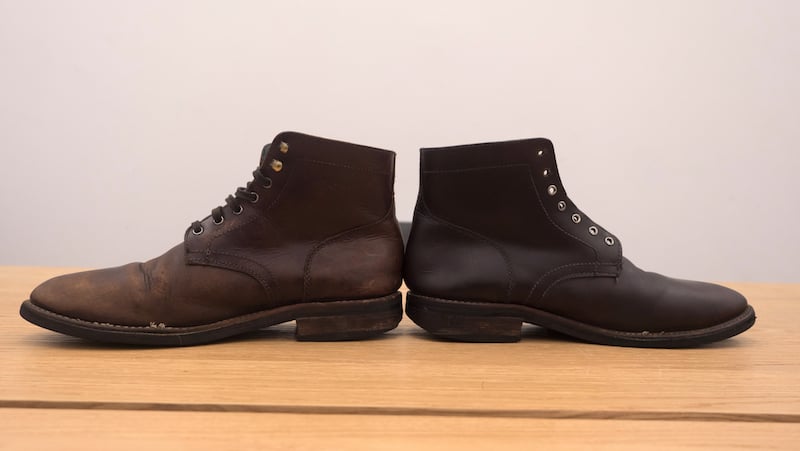
[Related: The 5 Best Boot Conditioners on the Market]
Benefits of Mink Oil
- Conditions leather preventing cracking and extending the lifespan of your products
- Adds extra water resistance to boots
- Helps with breaking thick leather boots
I learned about mink oil when I first started firefighting, when I actually got work boots. We were wildland firefighting, being in ash and heat all day, [those conditions] dry out the leather.
Weston Kay, Leatherworker & YouTuber, RoseAnvil
Mink oil did not get the name recognition that it has from nowhere. For a while, it was the go-to conditioner that workers relied on to maintain their leather goods and breathe new life into their boots. People in construction, farming, and other industries noticed that constant friction made their leathers dry, and mink oil seemingly reversed the damage. That’s why it remains popular even in 2024.
Mink oil serves to revitalize leather goods and will help protect them from the elements. Apply once every few months to keep leather hydrated.
Mink Oil Keeps Leather Soft & Conditioned
Mink oil was the conditioner of choice to re saturate that leather, prevent it from drying out and cracking. So it just adds that moisture. That gives you a longevity of leather.
Weston Kay, Leatherworker & YouTuber, RoseAnvil
Mink oil replenishes the leather’s natural oils that are lost during usage. The loss of oil makes leather boots more susceptible to cracking. Mink oil not only replenishes the missing oils, it also lubricates the fibers so they can be more flexible and durable.
Mink Oil Helps Break in Boots
If I’m breaking in a particularly tough pair of full grain boots with unlined quarters, I often put a small amount of mink oil on the flesh side of the quarter that touches my foot, to help soften the leather in the quarter.
Mike Larson, Product Design & Development, Red Wing Heritage
Mink oil is a tried-and-true method for softening leather and works great for easing the break-in period with new boots. You can put mink oil on both sides of the leather during the break in to make it a bit easier.

Mink Oil Paste vs. Liquid: What’s the Difference?
- Mink oil paste is less messy
- Liquid mink oil leaves less residue.
You may notice that mink oil products come in both paste and liquid form. One is not better than the other in terms of efficacy. Some people prefer the paste because it’s less messy and offers more control during application. Others like that the liquid leaves less residue and may simply use a more precise applicator brush to compensate. Ultimately, it’s all about personal preference, as both offer similar conditioning properties.
Does Mink Oil Waterproof Leather?
- Mink oil adds extra water resistance to leather
- It does not waterproof leather
Mink oil adds water resistance to some extent, but not nearly as well as actual waterproofing conditioners. It’s not going to be waterproof.
Weston Kay, Leatherworker & YouTuber, RoseAnvil
Another benefit of mink oil is that it can make your leather boots more water-resistant. That is to say, your boots will be able to take on light to heavy rain or the occasional snowstorm (for a short duration) and it helps to prevent salt stains.
This is not the same as saying your boots are waterproofed. Water resistance is not the same as waterproofness. Given enough time exposed to the rain, your socks will, one day, begin to feel wet!
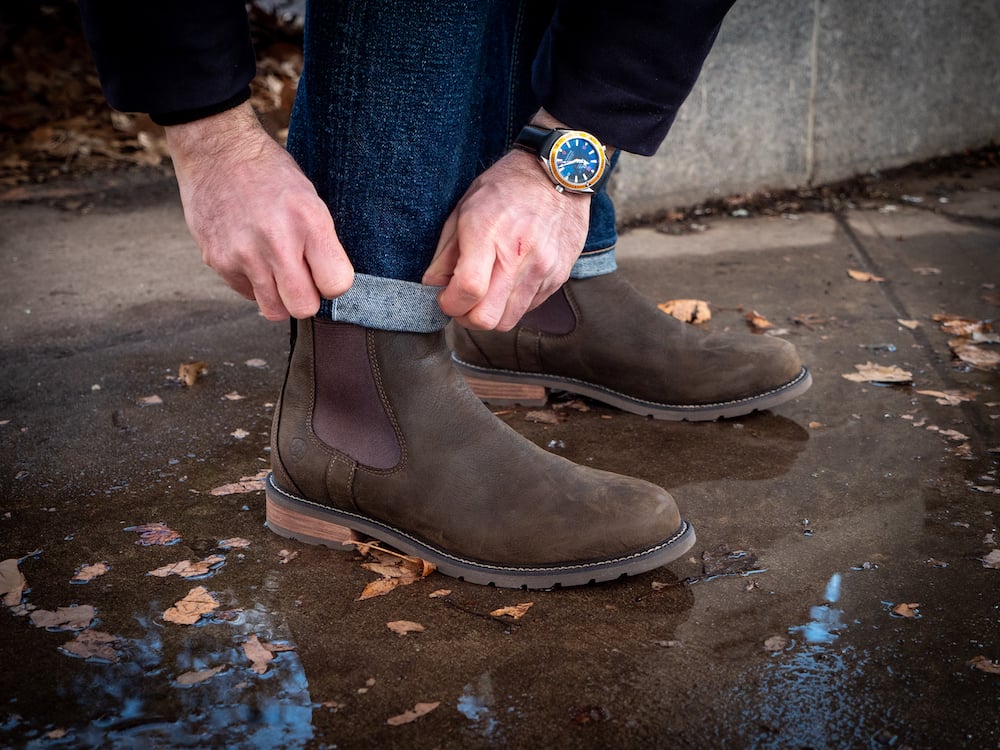
But back to mink oil. When applied correctly, mink oil paste fills and penetrates the pores of the leather, creating a coat that can repel moisture and mitigate salt stains. But how does it work? The science behind this is actually quite simple. Water is a polar substance and oils are a nonpolar substance.
Polar and nonpolar substances do not like to mix. When they come into contact with one another, they separate. Many of us have probably seen this principle in action while making chicken noodle soup! The oils float to the top, away from the water. This is why treating your shoes with a fat-derived oil improves their water resistance.
[Related: The Right Way to Waterproof Nice Boots]
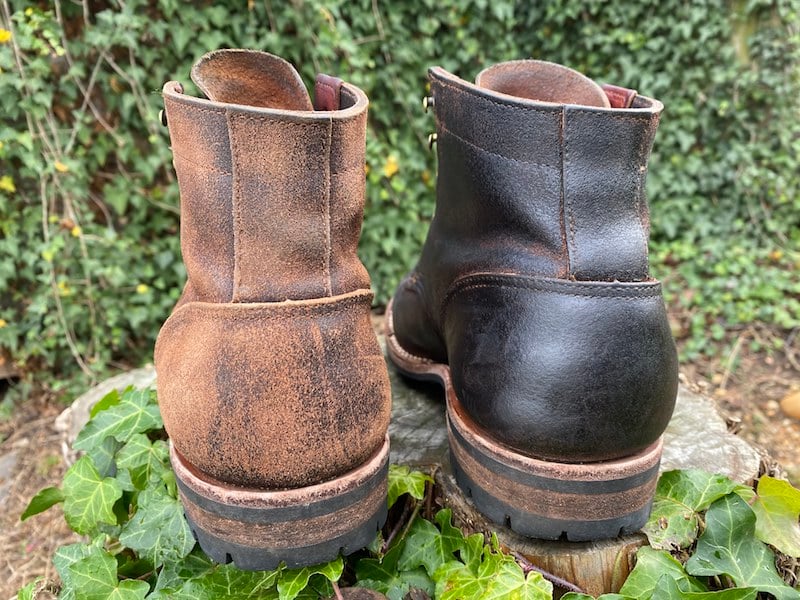
Applying Mink Oil to Leather Boots
- Make sure your boots (or other leather item) are clean and dry. Wipe them with a dry cloth and make sure they have been dry for at least 24 hours before application.
- Use a hair dryer to gently warm up the leather of your boots to aid with absorption so the mink oil can deeply penetrate leather fibers.
- Apply mink oil paste or liquid to the applicator brush, soft cloth, or rag. Start with a small amount.
- Gently rub the mink oil into the leather, section by section. Wipe off any excess mink oil that gets onto non-leather parts of the shoe (laces, eyelets, etc.).
- Allow the oil to absorb into the leather for at least 30 minutes, and ideally more than an hour.
- Brush the leather to make sure the oil has been evenly distributed. The leather may look darker and should be soft and supple.
Does Mink Oil Go Bad?
- Mink oil lasts for years if properly stored
- Don’t use coconut oil
A huge part of why people love mink oil, is even having this sit in the shelf for five years. As long as it’s not hot, it’s gonna be fine. If you put this on your boots, let them sit for a couple years, usually it’s gonna be fine.
Weston Kay, Leatherworker & YouTuber, RoseAnvil
Mink oil is very stable. Although it is high in unsaturated fats, it is not as reactive to oxygen as other animal fats or vegetable oil. By having greater oxidative stability, mink oil has a very little chance of going rancid when stored properly. As long as you keep your mink oil in a cool, dry space and away from heat, your tub should last for years.
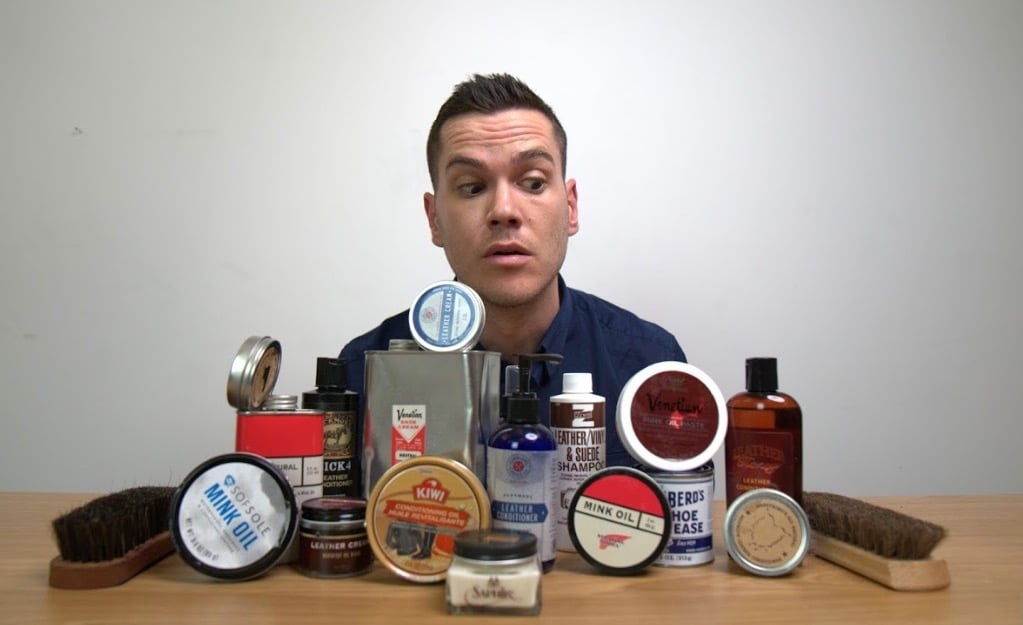
Is Mink Oil Ethical?
- Mink oil is the by-product of the fur industry
Despite its popularity, for some people, mink oil paste (or liquid) is no longer the poster boy for leather conditioners (and for good reason). I asked the founder of David Armstrong, of Armstrong’s All Naturals, for his thoughts on the matter.
“In the 21st century, mink oil is derived almost exclusively as a byproduct of mink fur farming for the fashion industry, mostly for fur coats,” he says. “While mink farms exist predominantly in China, some states in the US and many countries in the EU have already banned, or are beginning to outlaw fur farming due to animal welfare and environmental concerns.”
When it comes to mink oil, a lot of it these days isn’t made from mink fats at all. A lot of available gunk is made from a mixture of melted pig fat and silicon. Take a look at Sof Sole Mink Oil, for instance. We reviewed the stuff, and even though the name of the product is “Mink Oil,” it’s only 5 to 15 percent mink oil! This is why reading the product details on the label is so important.
Mink Oil Alternatives
One mink oil alternative is neatsfoot oil. Some people may find neatsfoot oil, which is oil from the rendered shin and feet bones of cattle, more forgiving because it is a byproduct of the existing cattle industry.
[Love Red Wing? See the differences between Red Wing’s Boot Oil and Mink Oil]
#1: Fiebing’s Neatsfoot Oil
Fiebing’s Neatsfoot Oil contains 100% neatsfoot oil. Since 1895, this all-natural conditioner has been used by workers and consumers alike, and many believe that it is best to use natural animal oils to replenish the lost oils in leather and keep your leather soft. It needs to be mentioned that this conditioner will darken your leather.
This natural conditioner and preservative for leather has been a popular choice since 1895, and is a great alternative to mink oil.
But are there leather conditioners out there that are not based entirely on products of slaughter at all? The answer to that is yes.
#2: Bickmore Bick 4
Bick 4 isn’t the sort of product that will deeply penetrate the pores of your boots and improve water resistance like mink oil, but we did name it the best conditioner for preserving the color of your boots. Made from a proprietary blend of natural emulsifiers, conditioners, and moisturizers, it keeps the leather moist and supple without darkening it. It’ll extend the lifespan of your boots; it just won’t waterproof them as well.
This versatile leather conditioner conditions, cleans, and protects your boots, shoes, and other leather goods—without darkening the color.
#3: Armstrong’s All-Natural Leather Oil
Armstrong All Natural Boot/Leather Oil contains palmitoleic acids found in mink oil; however, theirs is gathered from plant-based sources.
Armstrong’s All Natural manufactures a boot oil that mimics the nurturing properties of mink oil without relying on the fur industry.
This plant-based balm is made with tree nut extracts and vegetable oils to condition dry, cracked leather goods, and has such safe ingredients that it can even be used to hydrate dry skin—apply to elbows, feet, hands, or wherever.
[Read the founder of Armstrong’s All Natural’s op-ed: “You Use Too Much Boot Conditioner“]
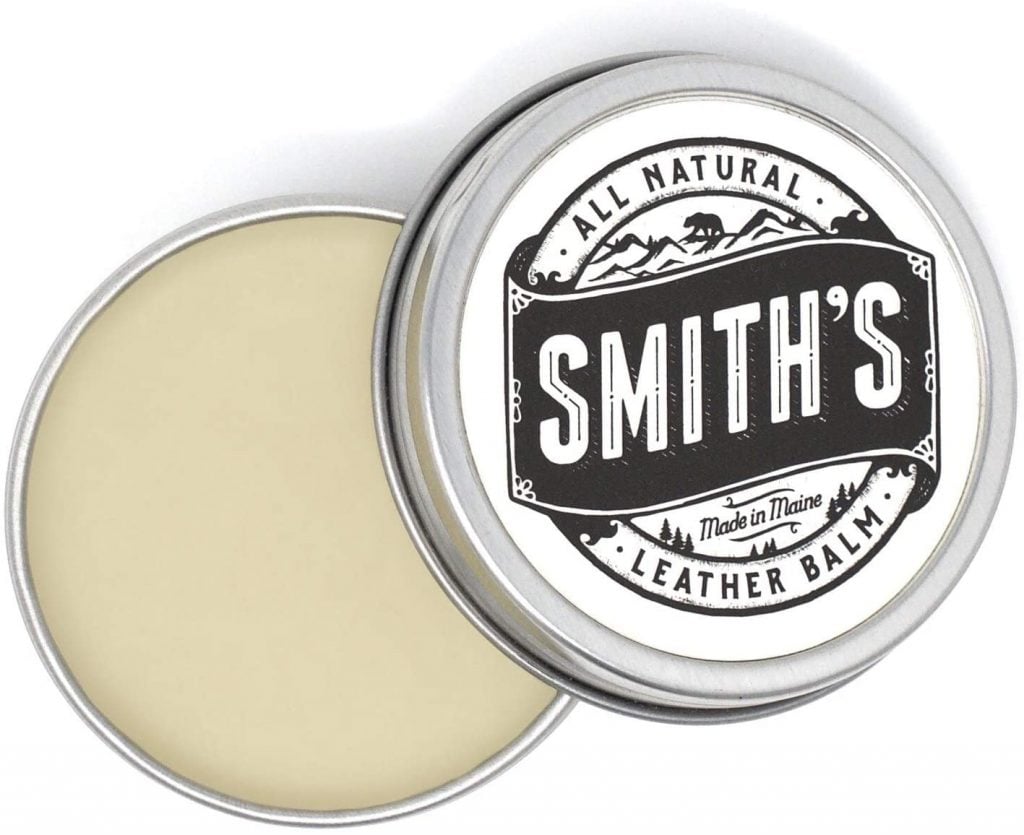
#4: Smith’s Leather Balm
Texturally similar to mink oil paste, Smith’s Leather Balm is another brand to look for. In my conversation with the owners, they mentioned that they “wanted a formula that could be safely applied by hand, [both] quickly and easily.” But in order for that to happen, they decided their recipe needed to be free of petroleum, animal fats, and potentially toxic chemicals, so they devised a conditioner that relied on plant-based ingredients.
The husband and wife duo behind the brand wanted something so safe that you can leave the excess on your skin after you’ve finished conditioning, so they’re transparent with the ingredients list: organic cocoa butter, organic beeswax, and 100% pure sweet almond oil.
Aside from the beeswax, which acts as a barrier against moisture, all the other ingredients help to condition with vitamins and moisturizers.
[Related: Does It Really Matter If a Conditioner Has Petroleum?]
#5: Obenauf’s® Heavy Duty LP
Obenauf’s® Heavy Duty LP contains beeswax and other natural nourishing ingredients. The great thing about this product is that beeswax not only protects the boot from moisture, but also keeps the body’s natural oils in. Seeing that this is a wax-based product, it is best used on chrome-tanned leather. For an Obenauf product for oil-tanned leather, see below.
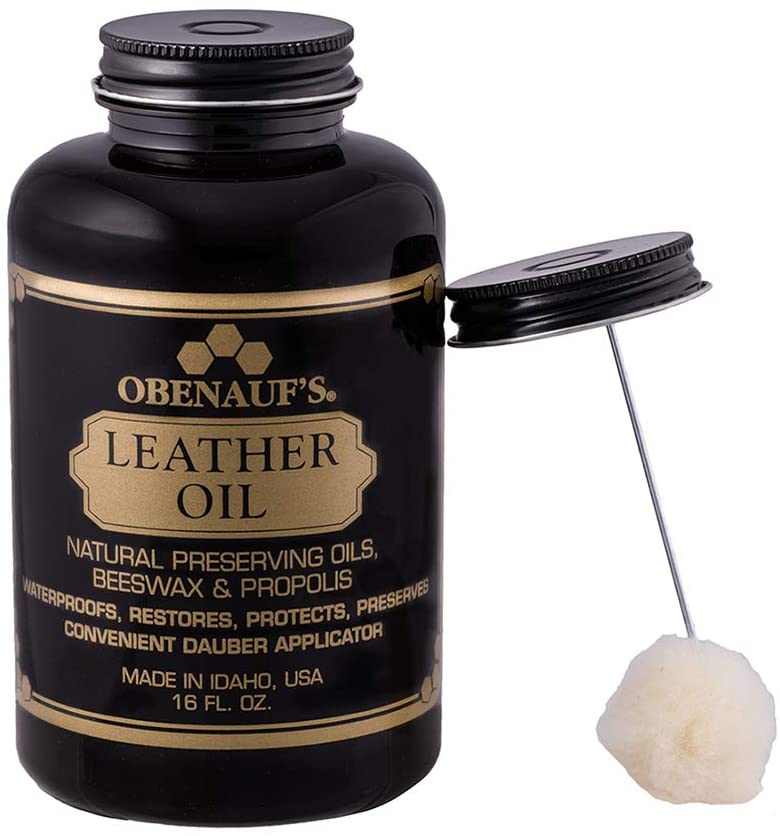
#6: Obenauf’s® Oil For Moderate Conditions
Obenauf’s® Oil For Moderate Conditions also contains beeswax and natural conditioning oils. This conditioner is similar to those listed above except it is more suited for oil-tanned leather and vegetable-tanned leather. Obenauf says that this product is great for hydrating leather that gets a lot of sun exposure during the summer months. This balm is formulated to heal cracks and restore leather discolorations caused by sunlight.
#7: Venetian Shoe Cream
Venetian Shoe Cream is a well-respected conditioner that many boot companies use. Although its formula and true ingredients are a well-guarded secret (it’s likely not plant-based), we do know that there are six or seven different waxes and no thickeners, silicone, or waterproofers. What this conditioner does is nourish leathers and gives them a little bit of shine (a wonderful added bonus for many kinds of shoes), making it a solid alternative to mink oil paste.
#8: Saphir Renovateur
Saphir Renovateur is another one of those conditioners that hides their full ingredient list. What we do know is it’s a combination of mink oil and waxes. It’s often used as a base layer on boots as a conditioner, and as a leather prepper for high-shine finishes.
Saphir Renovateur is not quite an alternative to mink oil as the ingredients do contain mink oil, but Renovateur will not darken your leather. It’s not all mink oil, after all; it also contains a variety of waxes that are intended to condition, shine, and produce a soft patina as the boots age. Watch the video from my Saphir Renovateur review below.
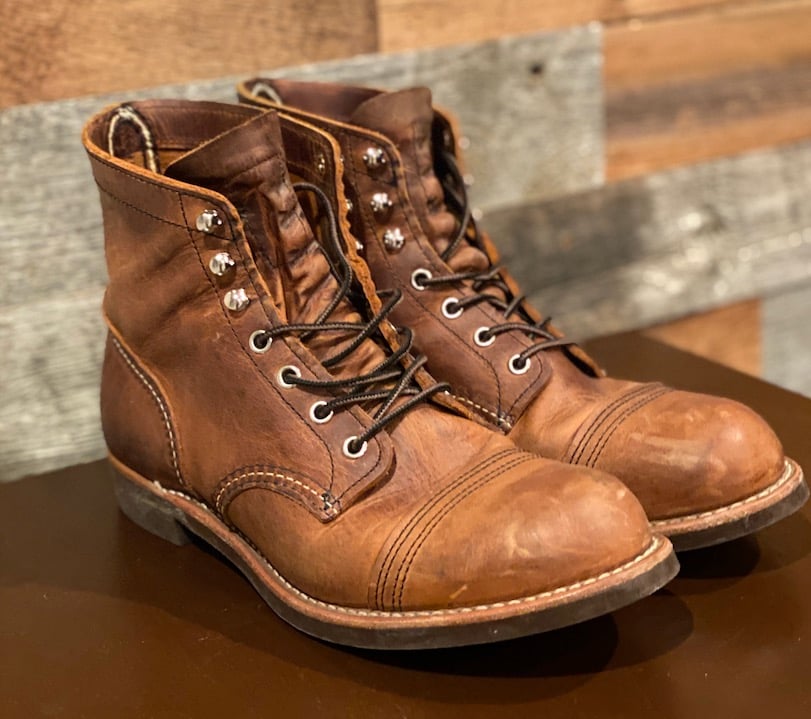
Will Mink Oil Darken My Boots or Cause Damage?
- Mink oil will darken leather
- Don’t over-condition your boots; you can clog the pores, and your leather shoes or boots may rot
The penetrating characteristic of mink oil can permanently darken some leather types, so be warned that it can alter the final appearance of the shoe.
Mike Larson, Red Wing Shoes
Mink oil will darken your leather significantly and take away the natural shine of your boots. Depending on the type of leather, it may even give it a matte look. Some people prefer the stock color of their leather — in which case, something like Venetian Shoe Cream or Saphir Renovateur is a better bet. On the other hand, Mike Larson from Red Wing Shoes explains, “many consumers who want to customize the shade of their leather choose this product to help darken the final look, It’s our #1 selling care product in Japan.”
Don’t use mink oil on suede boots unless you want to change the appearance.
Another thing to consider is that applying too much mink oil or using it too frequently will soften the leather too much and clog the pores of the leather, preventing any ventilating from taking place. This will accumulate moisture (that means your sweat — yuck!) that can lead to bacteria and mold growth, making your feet stink and slowly deteriorating the leather.
[Further Reading: Mink Oil vs Saddle Soap and When to Use Each]
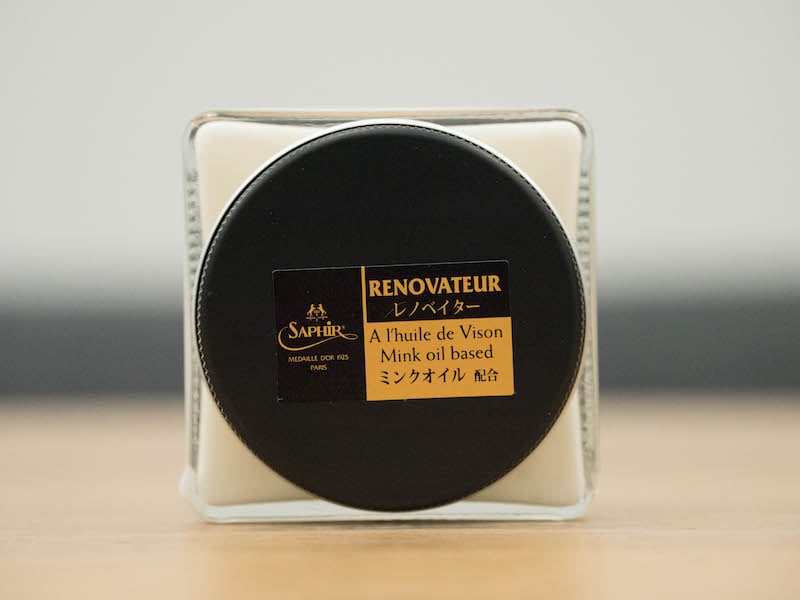
The Takeaway: Mink Oil For Boots
With its long history and versatility, mink oil is here to stay and will continue to be the go-to leather conditioner for many people. The product proves to be especially useful in a working environment for extending the life of leather.
It’s meant for rugged leathers and workers who deal with a lot of friction at the jobsite/farm. Hikers and workers generally do not care that their shoes are darkening because they expect that to happen.
Our Mink Oil Experts
- Weston Kay, Leatherworker & YouTuber, RoseAnvil
- Mike Larson, Product Design & Development, Red Wing Heritage
- David Armstrong of Armstrong’s All Naturals
Should I use mink oil on my boots?
Mink oil is a great product to add oils back into your dry leather boots. It also adds water resistance to leather. Mink oil will darken your leather permanently and give it a matte look, we recommend other conditioners if you want to preserve the look and feel of your leather boots.
Does mink oil weaken leather?
Used properly, mink oil will not weaken the leather. Applying too much mink oil or applying it too frequently will soften the leather too much, clog the pores in the hide, and prevent airflow.
Is mink oil good for new leather boots?
This depends on the type of leather and how long the boots have been sitting in the store or factory. Leather dries out over time and this leads to cracking. Most leather boots have been treated with oils and waxes to prevent them from drying, but if your new boots have been sitting in the store for a year or more the leather will dry out. If the leather feels dry add a very small amount of mink oil or leather conditioner to your boots.
Why do people put mink oil on boots?
People put mink oil on boots that are used frequently in tough conditions like high temperatures, wet conditions, or muddy dirty environments. Mink oil works as a protective coating for the leather.

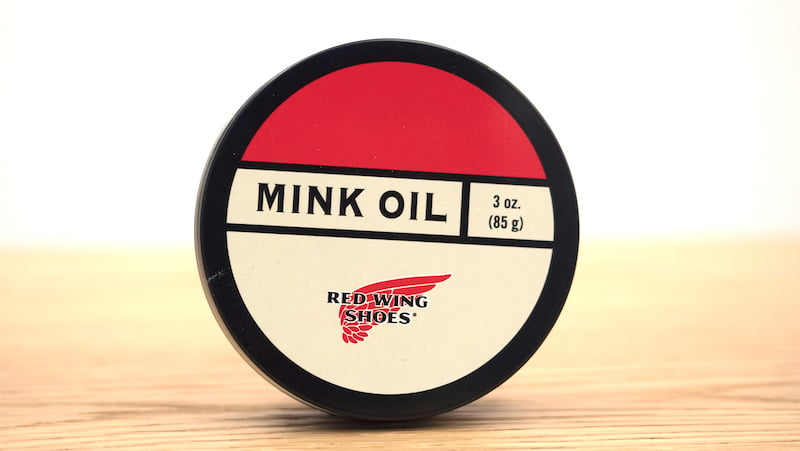




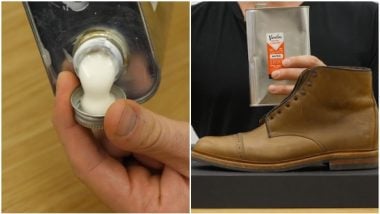
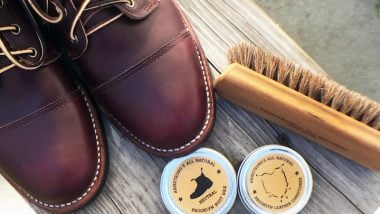



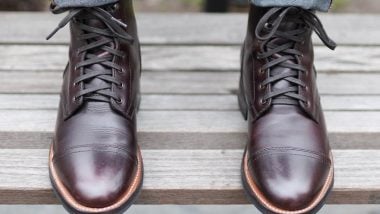


Thanks for the wealth of information.
I found this while trying to find an answer to another question, however.
I am looking for an “ emulsifying maintenance oil”. Which products, or type of product would fit this description?
Maintenance oil? For maintaining leather or your car?
Great read, thank you. I’ve been coming to Stridewise to learn more about taking care of my leather boots. One product I rarely see mentioned is Aussie Leather Keep. I’ve been using it on my leather work boots and have had no issues.
Cool! Despite being Australian it’s not really worth it to post about products that are only available in Australia, but I’m glad you’ve found something you like Joel
Can I use mink oil to condition my boots?
Sure! If you’re OK with a bit of darkening
Lol did you read the goddamn article? It was written to fully explain the answer
Thanks for the article! A really helpful read. You’ve stopped me using mink oil on my new boots, they’re described as a waxed, matte supple, thin leather and I’m not sure it’s quite right for them. Would the standard saphir renovateur be suitable for monthly use in your opinion? Or is there a better product for this kind of waxed leather out there?
Kind regards,
Jack.
I think Saphir would work fine Jack, it’s actually a mix of waxes and mink oil but it’s a lot better at maintaining color.